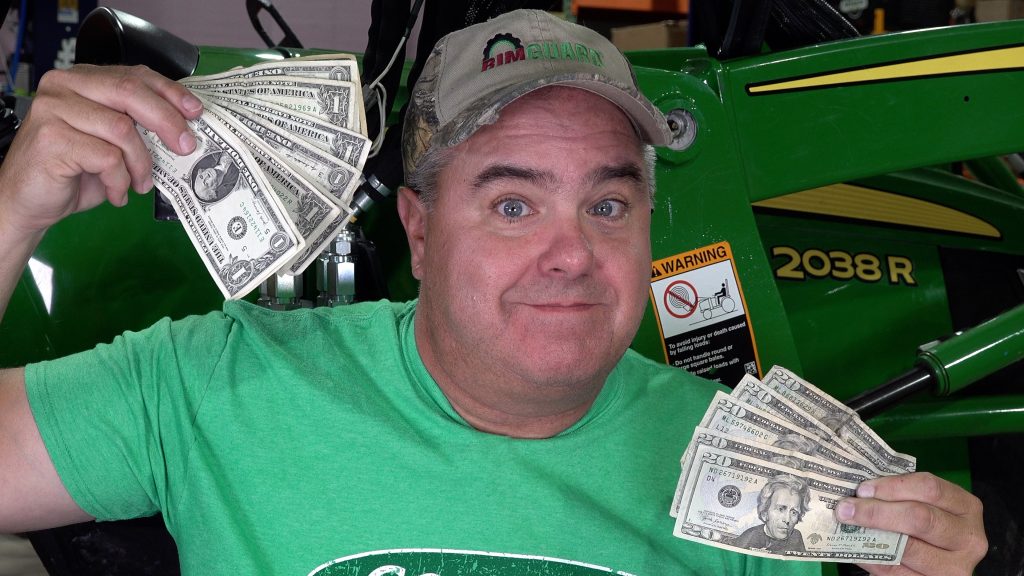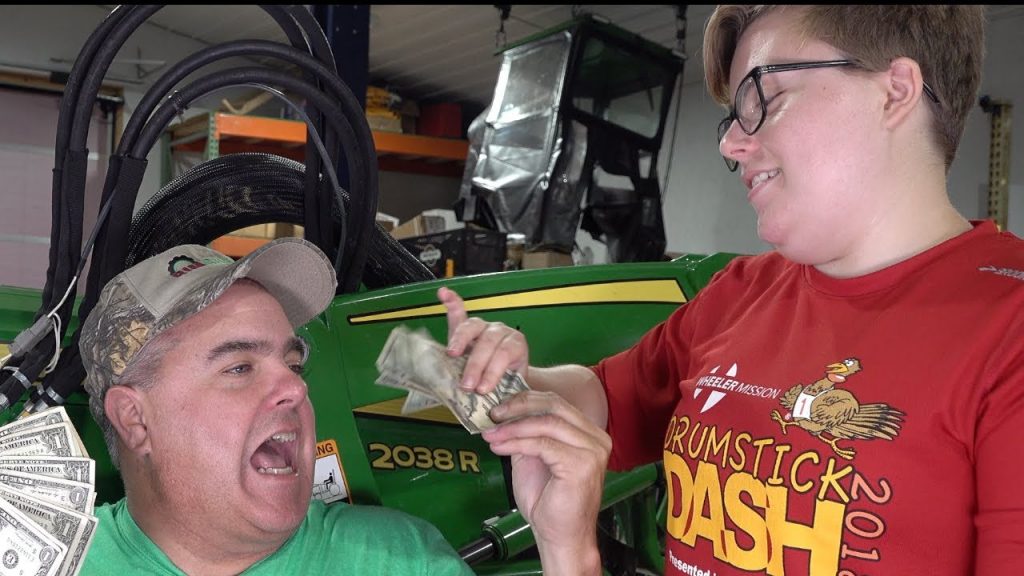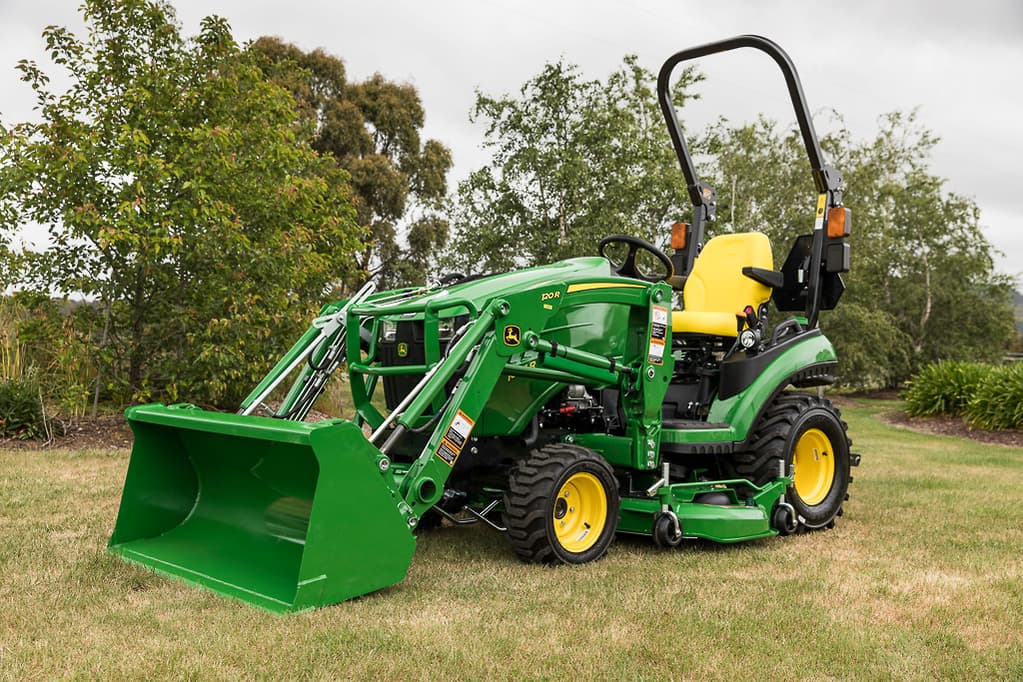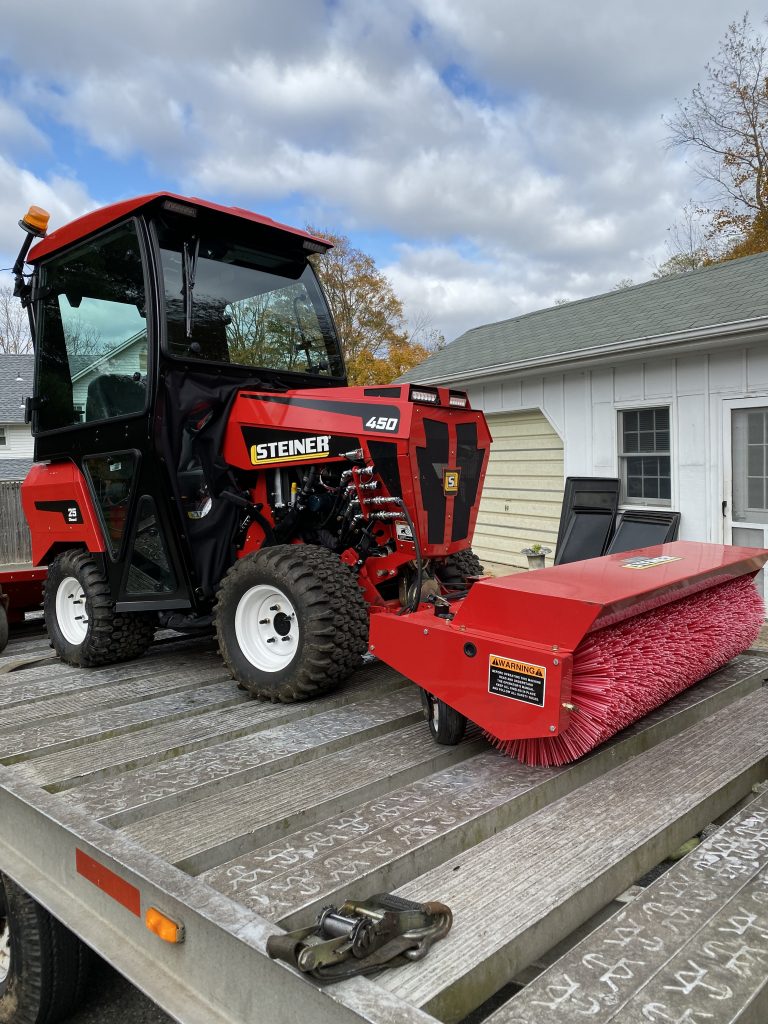Make LOTS of Money With Your Tractor – Estimates!

You drive up to the customer’s property, get out of your truck, introduce yourself to the customer and proceed to discuss their project. These initial few minutes with the client will determine if you get the project, and how much money you make doing the project. Handle this well and you will be quite successful. Handle it poorly, and you will create frustration for everyone!
We’ve got some tips to help you not only get the job, but also make the customer much more comfortable in the process. Let’s get started.
Hypothetical Initial Customer Visit
Let’s say that you have figured out your costs, and you need $100/hr to make a sufficient profit. $100/hr is just hypothetical at this point. We’ll work through some details of this in later posts, so don’t get caught up in this now.
Back to our hypothetical customer visit.
Let’s go through a typical (in my opinion losing) scenario. After a bit of project discussion, the customer asks what will this cost me? You say “I charge $100 hour…” then you pause to see the customer’s response…
If you’ve tried this, you KNOW how the customer will respond. They have no other choice, as their primary question has not been answered. They will ask “ok, how long do you think it will take?”.
You stumble a bit and say “Oh, I should be able to get it done in 2-3 hours”.
The customer hears the estimate as $300 max, $100/hr.
If it takes 6 hours, the customer will not be happy, and you will get $300 because that is what you estimated.
If it takes 1 hour, the customer expects to pay $100.
My experience is that this is a sure way NOT to make much money, and to have dissatisfied customers.
In my opinion, your potential profit was minimized the moment you mentioned your hourly rate. Yes, that’s right. I suggest that you NOT mention an hourly rate to your customer.
So, why do you quote an hourly rate? Likely because you don’t want to take the risk of time overruns, or changes to the project definition. You are thinking that by using an hourly rate, if it takes longer than you think, you will charge for the extra hours.
But it doesn’t work that way, does it? The customer needs a firm estimate or at least an ‘upper limit’, and will keep asking questions until you give them one.
Customer Visit Done Right
So, let’s look at the same project discussion again. This time we will avoid mentioning our internally desired $100/hr rate.
Long before the pricing discussion begins, you will be evaluating the project details with your client.
As you are evaluating try to break down the overall project into smaller tasks. For example:
- Till the area in question to break up the sod
- Move the top soil to one side of the yard
- Till the area again
- Dig out a swale with the loader
- Transport that sub-soil you just dug out to another location in the yard
- Bring topsoil back and spread over the new swale area.
- Final grading with hand rake
- Customer will sow the seed to finish it.
This requires lots of quick thinking. Remember, the customer is standing there, expecting your immediate feedback on the project. How can you handle this?
I suggest creating the detailed task list “out loud” with your customer. This will help them to see the complexity of the task a bit better, and help them to see that you know what you are doing. For example, they might say “Oh, I never thought about saving the topsoil”. Or they might say “Don’t worry about saving the topsoil, don’t waste your time”. Either way, you can modify your plan.
After the plan is established, the customer will want to discuss pricing, but this time you are more prepared. You have the list in your mind (or in notes on paper), you can quickly add up projected time in your head. Assuming you end with 2-3 hours (as in the prior example), I would suggest that your final quote be padded for those unforeseen circumstances.
Customer says “What will this cost me?”
You say “I’ll till, move the topsoil, till again, dig the swale, …. We should be able to do that for $500. The only concern I have is if we run into this issue….if we do, then it will be an extra $100”.
At this point, you have directly answered the customer’s question. They typically will not ask your hourly rate, and if they DO ask how long it will take, they are asking more from a planning standpoint. Meaning “how long should I take off work…1/2 day, all day, long lunch?” rather than affecting your pay.
When the project is complete, you’ll get your $500, even if it only takes 1.5 hours. I would encourage you not to ask for the other $100 unless the project went MUCH worse than anticipated. Remember, your quote had some room for error, and to the extent you underestimated, use this project as a lesson for the next one!
Why does this approach work?
Remember that YOU know the capabilities of your equipment much better than the customer. The customer likely would not have called you unless they thought the job was too big to accomplish by hand. They see the task as a LOT of work. When you quote an hourly rate, they immediately think about how long it would take them by hand. Maybe 10 hours for a project you can do in 20 minutes.
They see an insurmountable amount of brush in the back corner of their yard. You see a few minutes with your chain saw and 2 or 3 trips with the grapple to the burn pile, dumpster, or chipper.
This isn’t always the case. For example, customers often see garden tilling as something they could do. For that reason, we find garden tilling to be more price sensitive than some of the other work we do.
Exceptions
Quoting an hourly rate, and an estimated time of completion boxes you in. It is very difficult to ask for more than your originally estimated time, and if you get done faster, the customer will expect to pay less. This is exactly the opposite of your intention. You expect that an hourly rate transfers the risk to the customer. So, why use this approach? Step up, make a commitment, a firm estimate and stick to it. Typically, the results will work in your favor.
I do sometimes make an exception to this approach. Sometimes the job is quite large and poorly defined. For example, we might remove some of this brush, then figure out the next steps.
Sometimes the customer isn’t convinced we can do the job with our little tractor.
In these cases, I typically suggest that we work for 3-4 hours for an agreed fee. Then, we can re-evaluate. If they think we are providing value, we can continue. If not, we can stop after the original commitment. So far, we have never had a client tell us to stop after the original time commitment. They are always thrilled with the productivity.
Summary
Providing a good solid estimate or quote makes the customer more comfortable. A trusting and comfortable customer will make the job go much better, and be much more enjoyable.
In future posts, we will discuss other aspects related to this. We’ll dig into calculating the appropriate hourly rates for your internal calculations. We’ll also discuss other ways to make the customer feel more comfortable.





Good points Tim. Others will profit from your observations/recommendations. Nicely done.
Thanks Dan!
I just got my 1025r and I am try to figure out how to get job with my little tractor and the attachments I have for any advice for a new comer